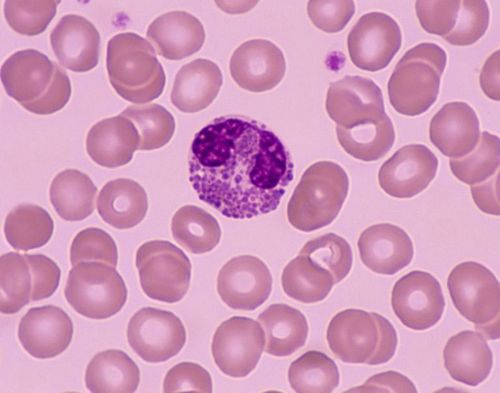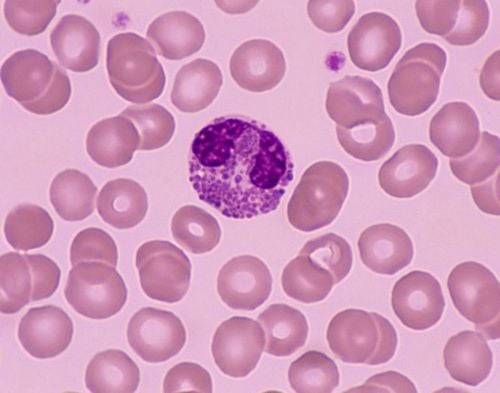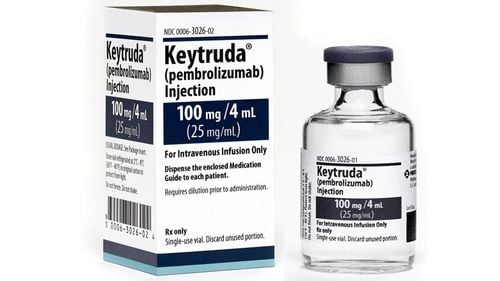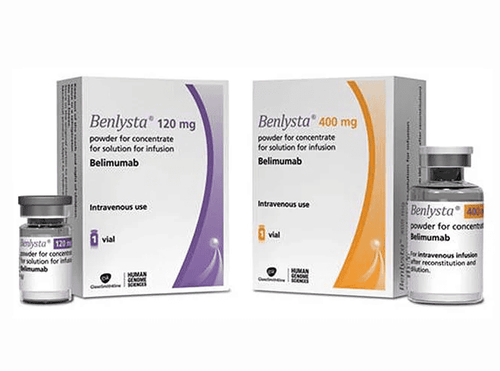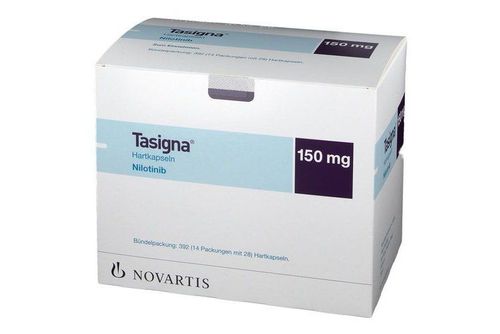This is an automatically translated article.
Eosinophils represent the health of the patient. When cancer is suspected, the patient is advised to have an eosinophil level test to check and diagnose the disease.1. What are eosinophils?
Eosinophils are white blood cells produced in the marrow. They stay in the blood for a few hours and then move to the tissues and stay there for several days. Eosinophils are nucleated, two-lobed, granular white blood cells connected by a small filament of chromatin, whose cytoplasm is not smooth, slightly coarse, surrounded by granules, and of uniform size.Because the morphology on the stained blood smear is the image of white blood cells capturing bright eosin, the name eosinophils - Eosinophil is named after the dye. Eosinophilic cells normally reside in tissues and are found several times more frequently in tissues than in blood.
Eosinophils represent a person's state of health. Therefore, when cancer is suspected, doctors often recommend patients to have blood eosinophil levels to check and diagnose the disease more accurately.
2. Characteristics of eosinophils
Eosinophils in particular and white blood cells in general have the following characteristics:
Transvascular: Able to change shape, penetrate the wall between cells to move to places where white blood cells are needed. Movement: Capable of using prosthetic legs (amoeba-like) at a speed of 40 mm/min. Responsive to chemodynamic and thermodynamic stimuli: When there are substances produced by inflammatory tissue or by bacteria or there are chemical substances introduced from the outside into the body, which attract eosinophils to the body. (positive chemotaxis) or repel leukocytes further (negative chemotaxis). Similarly, eosinophils also have positive and negative thermodynamics. Phagocytosis: Capable of phagocytosis, phagocytosis. However, the phagocytic capacity of eosinophils is weak.
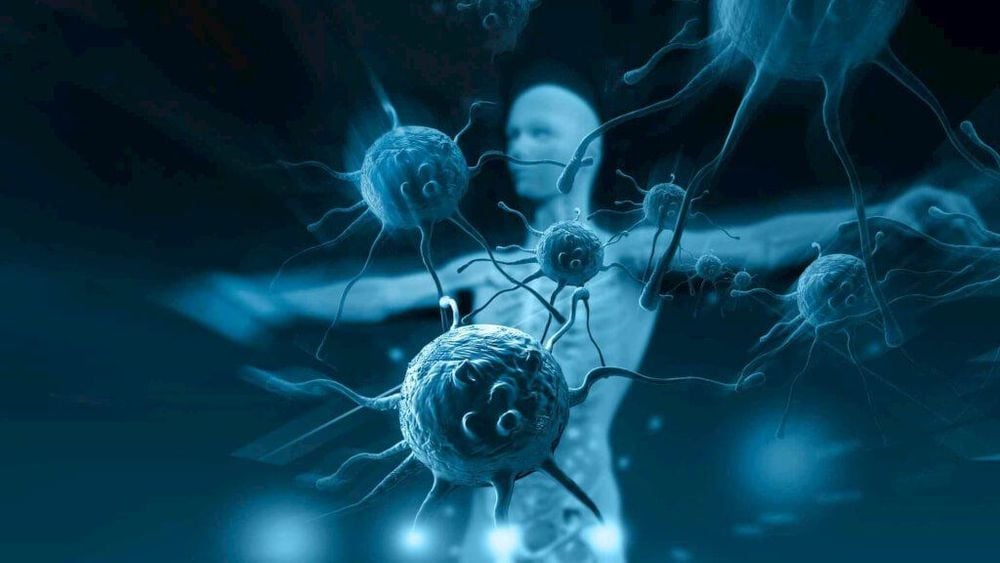
Bạch cầu ái toan có vai trò rất quan trọng trong hệ thống miễn dịch
3. The role of eosinophils
Eosinophils have a very important role in the immune system, which is:
Destruction of foreign substances: consumption of foreign substances, especially those associated with parasitic infections. Regulate Inflammatory Response: Increased eosinophils promote inflammation, which is beneficial in isolating and controlling an ongoing disease site. Sometimes some of the inflammatory responses can be stronger than necessary, leading to complex and troubling symptoms and possibly even tissue damage.
4. Function of eosinophils
Fights bacteria and parasites. Destroy cells. Take part in allergic reactions. Play a part in the inflammatory response. Respond to inflamed areas. Although eosinophils are part of the immune system, their response is not always good. Sometimes, they are part of conditions such as food allergies, inflammation in the body's tissues.
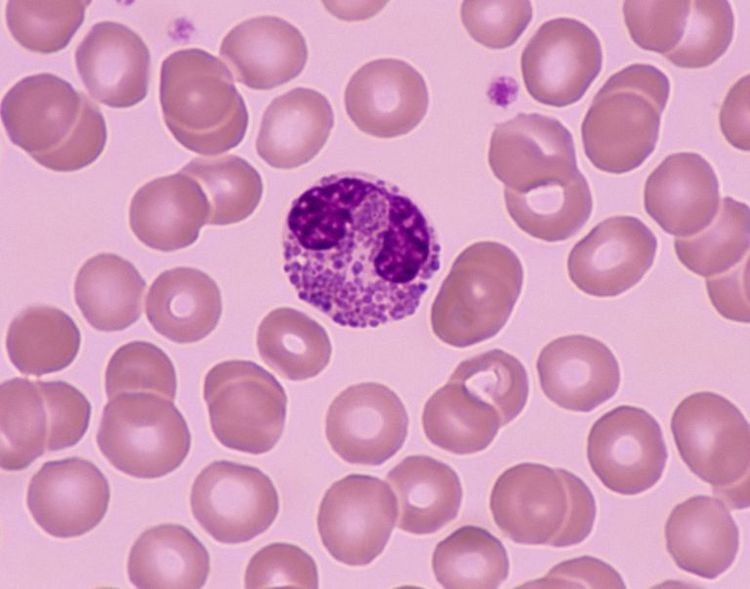
Bạch cầu ái toan là một phần của hệ thống miễn dịch
5. Eosinophilia
The eosinophil index is the number of eosinophils in the blood, normally this value is in the range of 50 - 500 cells/mm3, accounting for about 2 - 11%. When compared with other white blood cell counts in the blood, eosinophils usually account for a small percentage.
Eosinophils are white blood cells produced in the marrow. They stay in the blood for a few hours and then move to the tissues and stay there for several days. When cancer is suspected, doctors often recommend that patients test their blood eosinophil levels to check and diagnose the disease more accurately.
Please dial HOTLINE for more information or register for an appointment HERE. Download MyVinmec app to make appointments faster and to manage your bookings easily.




